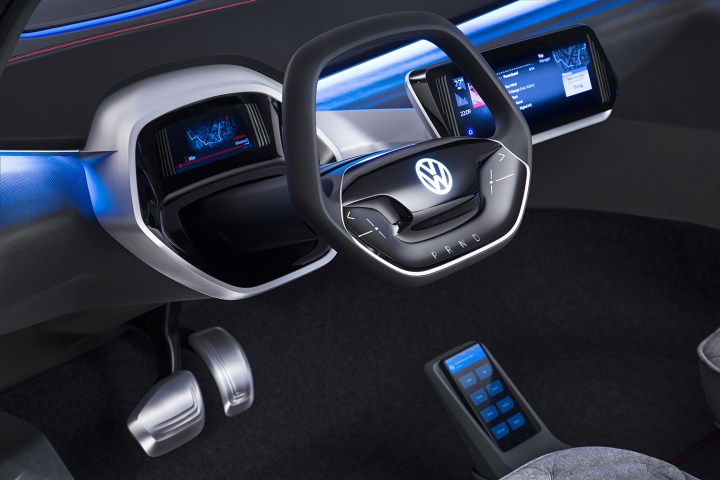
“Our vision is ‘Mobility for all, at the push of a button.’ This means that we want to offer mobility for all people around the world,” said Volkswagen Group’s Chief Digital Officer, Johann Jungwirth, in a statement. “Mobility also for children, elderly, sick and visually impaired people, really for all. ‘At the push of a button’ stands for simplicity and the easiness of use.”
“In the future, people can of course use our mobility app or digital virtual assistant to hail a self-driving electric vehicle to drive them conveniently door-to-door, or use our Volkswagen OneButton which has GPS, connectivity and a compass, as a small beautiful key fob with maximum convenience.”
The new collaboration hopes to accelerate Volkswagen Group’s development of Self-Driving System, or SDS, for the company’s future line of automobiles. The aim is to offer “Mobility-as-a-Service,” or a platform that offers drivers and Volkswagen customers a unified system and network that customizes individual experiences, offering other assistive services in tandem with autonomous driving. The duo also seeks to refine and improve current interfaces and aspects of connected driving app suites and autonomous driving technology, to make a world-class user experience for others to follow.
Volkswagen Group and Aurora have been working together more closely than ever over the past six months, integrating Aurora’s self-driving system with the German carmaker’s Machine Learning and AI technology. Future Volkswagen platforms will utilize Aurora’s system, including all sensors, hardware, and software. So that means like any other suppliers, Aurora will be responsible for self-driving VWs of the (hopefully) near future.
From there, the company envisions ways to utilize the platform, and whatever data collected from it, to improve traffic flow, reduce pollution, and traffic fatalities in urban and rural areas.
“Our priority at Aurora is to make self-driving cars a reality quickly, broadly and safely, and we know we will get there faster by partnering with innovative automakers like the Volkswagen Group,” said Aurora CEO Chris Urmson. “This partnership establishes a deep collaboration using Aurora’s self-driving technology, and together we will bring self-driving vehicles to market at scale.”
Editors' Recommendations
- Tesla Autopilot vs. full self-driving: What’s the difference?
- Beleaguered robotaxi startup Cruise lays off quarter of workforce
- Cruise’s robotaxi service suspended by California regulator
- Waymo expands robotaxi service area in San Francisco
- Cruise autonomous vehicle drives over woman just after she was hit by another car


